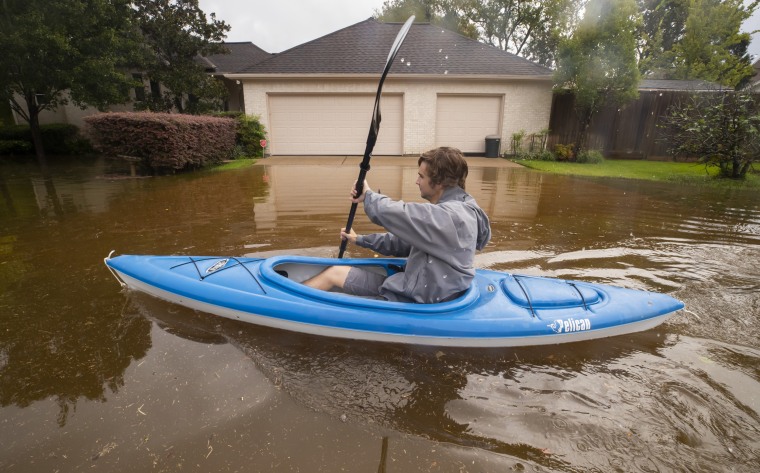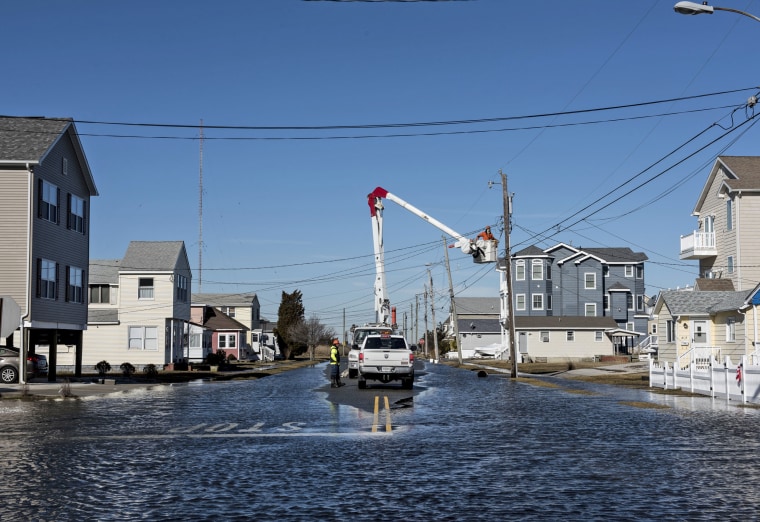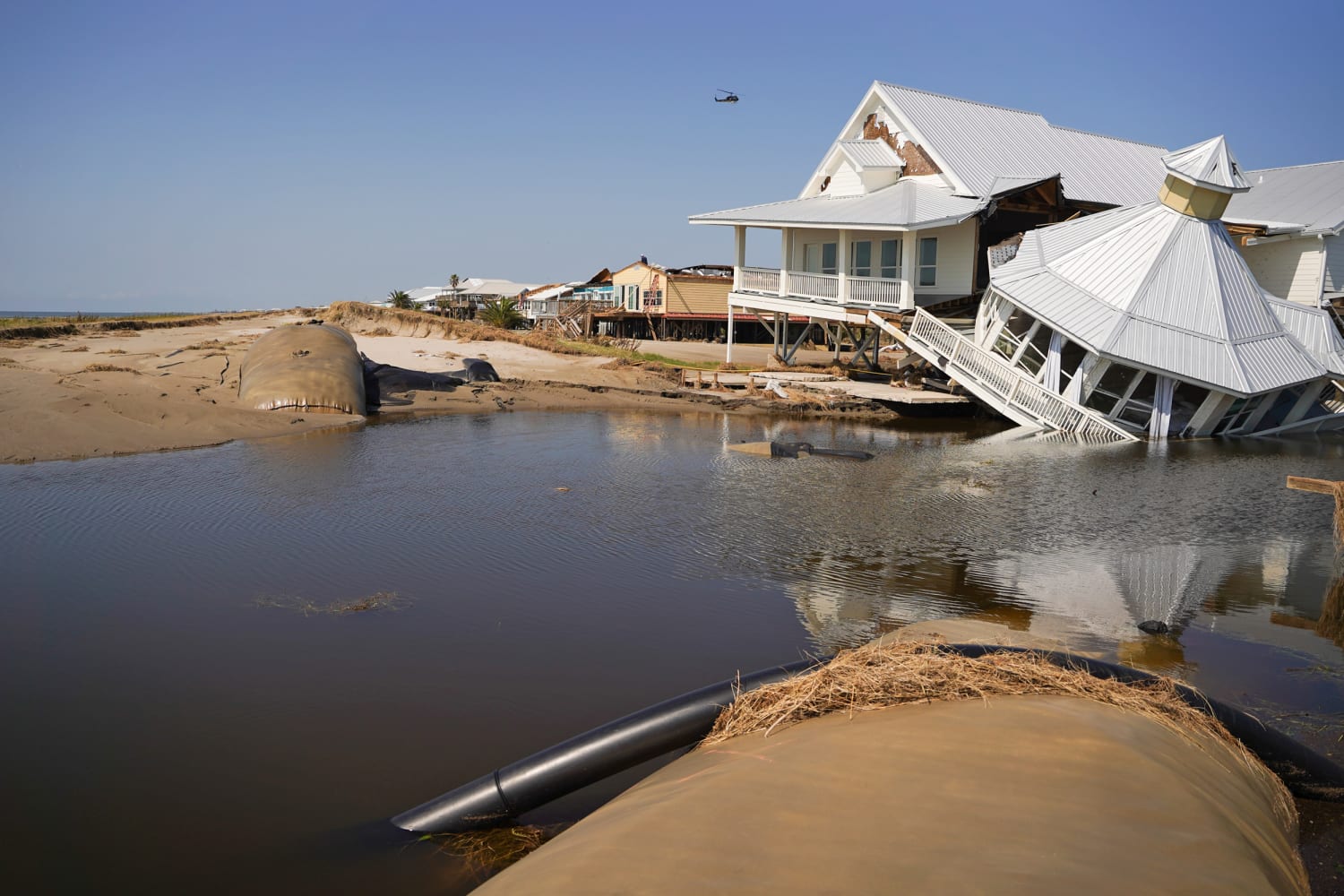Sea level rise will flood huge swaths of the country and submerge billions of dollars’ worth of land, according to a new report.
An analysis from Climate Central, a nonprofit research group, put a price tag on just how much all that land is worth — and how much local governments stand to lose when it goes underwater. The report found that nearly 650,000 privately owned parcels of land over more than 4 million acres will fall below tide lines within the next 30 years. The analysis indicates that sea level rise could reduce the value of that private land by more than $108 billion by the end of the century.
Because all land below the tide line is, by law, state-owned, the encroachment of the tides could essentially vaporize huge amounts of private, taxable wealth. That, in turn, will decrease property tax revenue substantially in coastal areas, which experts caution could ultimately bankrupt local governments.
For millennia, tide lines haven’t really budged. Nor has the notion that any land under water is public, which is an “idea that goes way back to Roman times,” said Peter Byrne, the director of the Georgetown Environmental Law and Policy Program. “The tidelands, the sea, they’re open to the public because they’re navigable. They’re inherently public.”
But as the planet heats, the old tide lines are climbing uphill. The study found that an area the size of the state of New Jersey that is now above water will be submerged at high tide in 2050.
“Sea level rise is ultimately going to take land away from people,” said Don Bain, a senior adviser with Climate Central, who wrote the report. “That’s something we haven’t come to grips with.”
Losing such a huge amount of private land over a few years could have far-reaching consequences. Insurance companies have already started to pull out of coastal markets or are raising their premiums substantially. Banks and other financial institutions are starting to look at whether it makes sense to lend to homeowners and businesses along the coastline.
All told, places that are currently livable will become increasingly hard to live in. Here’s what this might mean for local governments.
Risk isn’t evenly distributed
Climate Central found that, unsurprisingly, the effects of sea level rise aren’t evenly distributed across the U.S. The Atlantic and Gulf Coasts will feel its effects more than other parts of the country. In many areas along the coast, sea levels will rise significantly faster because land is sinking as sea levels rise.
By 2050, Climate Central estimates that about 75% of Terrebonne Parish, Louisiana, will be underwater. In Hudson County, New Jersey, $2.4 billion worth of taxable property will be submerged. In Galveston County, Texas, more than 4,200 buildings that are currently above sea level will be at least partially underwater.

“Climate impacts are not going to happen far off into the future, but within the life of the mortgage on your house,” said Anna Weber, a policy analyst with the National Resources Defense Council.
While sea level rise is one of the major impacts of the climate crisis, it’s not the only one. Supercharged hurricanes and wildfires will also cause displacement and will contribute to the erosion of local tax bases as people move to safer areas. More frequent intense rainstorms are expected to cause more inland flooding in many parts of the U.S. Coastal counties won’t be the only places affected.
“These numbers are relatively conservative,” said Jesse Keenan, a professor of sustainable architecture at Tulane University, who was not involved with the Climate Central study. “That’s what should scare people.”
Doing more with less
In many places, coastal property is the most valuable real estate — and a major source of property taxes for local governments. Without it, municipalities could see a huge loss of revenue at a time when the costs of adapting to climate change are expected to skyrocket. The costly measures that municipalities will need to undertake to adapt to rising sea levels, like building seawalls or elevating roads, could become more difficult to fund.
“When that property tax revenue base shrinks, it’s a compounding problem for adaptation,” said A.R. Siders, a climate adaptation researcher at the University of Delaware’s Disaster Research Center. That could create a vicious cycle: “Not being able to protect those homes reduces their value and so you have fewer resources to protect those homes.”
That won’t just affect the owners of beachfront property. Municipalities rely on property taxes to fund roads, schools, trash pickup — all the basic services that residents rely on.
“It seems probable to me that over time we’re going to have to figure out a different funding model for really flood-prone communities, or communities along the coastline,” Siders added. “They’ve been relying on the perpetual growth of the housing market and that just doesn’t deem realistic in places that are going to experience the effects of climate change.”
One tool that municipalities use to raise money to fund projects that make them more resilient to climate change is municipal bonds — to do things like build a new bridge, fund the construction of a school, or, maybe, to pay for flood control so a city doesn’t get submerged by the next big storm.

Flooding poses threats to crops, commuting routes, utilities, wastewater treatment plants and buildings, the report noted. How local governments react to these economic hits will have implications for their ability to repay debt and keep their credit ratings afloat.
“Before they even reach bankruptcy, stress is going to reverberate through the muni bond market,” Keenan said. “What we’ll begin to see is a more explicit [climate] premium and a higher cost of borrowing for these counties.”
‘Choices to be made’
There are parts of the country that are exacerbating their exposure to the climate risks by continuing to build in coastal areas that will soon be underwater. Climate Central’s report calls for stricter restrictions on new developments and for building new housing outside of risk zones.
Buyouts, in which the government offers to purchase flood-prone buildings, could help create a natural “buffer zone” along the coasts, other experts suggest.
“This issue of losing tax base is something that comes up a lot when we talk about home buyouts because in that case, you are deliberately converting a property from private ownership to public ownership,” Weber said. “What this report shows is that, in some cases, that process is going to happen whether you do it deliberately or not.”
Besides building codes and moving people out of harm’s way, there’s still time to change course on greenhouse gas emissions, Bain emphasized. If the world continues to produce emissions at the current rate, the tides will rise faster; reducing emissions now will allow crucial time to adapt to the rising tides.
“We may not be able to change much between now and 2050, but we can make a large difference going forward from that,” Bain said. “There are still choices to be made — between better outcomes and far worse outcomes.”
Source: | This article originally belongs to Nbcnews.com










